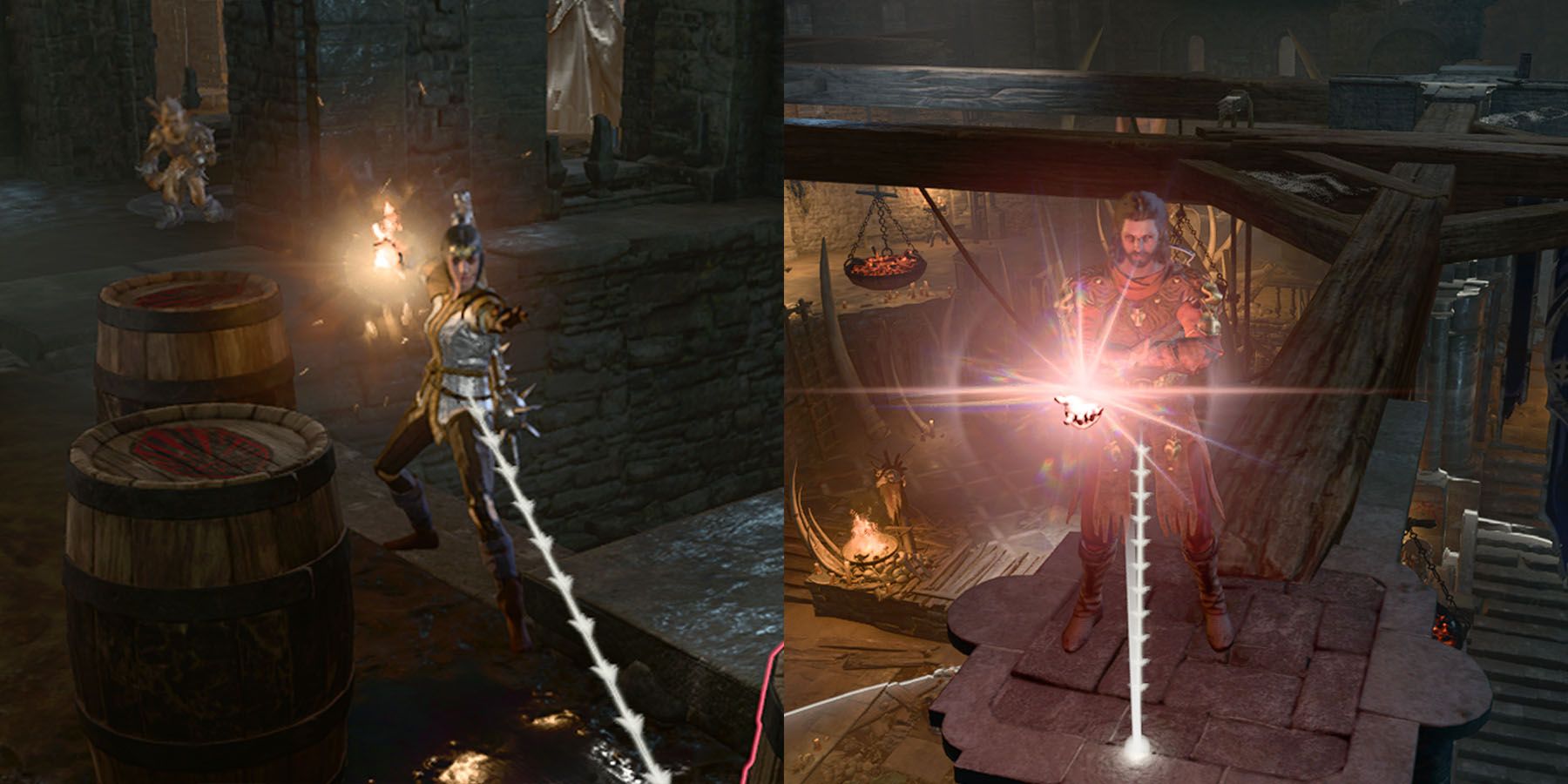Baldur’s Gate 3 is one of the biggest video game successes in the last few years, and that’s all thanks to the massive efforts of Larian Studios, faithfully recreating the world of Dungeons & Dragons and continually improving on gameplay. Yet a natural part of transforming a TTRPG into a video game is considering what to leave behind and what to change. Here, one Baldur’s Gate 3 element stands out.
The key to D&D is its combat system, but there are several complex parts that make up a good battle. In BG3, the environment takes its toll, far more than is implemented in D&D 5e. Whatever comes of D&D next, new rules could take inspiration from Larian.

Related
Baldur’s Gate 3: 10 Ways To Use The Environment To Win Fights
In Baldur’s Gate 3, players can use the environment to their advantage, often to devastating effect.
BG3’s Environment Would be Suitable for an Immersive D&D Game
Environmental Hazards are Abundant and Effective in BG3
Every encounter in Baldur’s Gate 3 has the potential for environmental damage—and for players to take advantage of it themselves. Grease and oil can be used to engulf the map in flames (or oil barrels for explosions), or water can be turned into electrifying lightning or crippling ice. Poison can, well, poison, and acid can reduce a character’s Armor Class. Each effect has clearly written rules, but D&D hasn’t actually codified them.
Aside from their basic impacts, including environmental conditions can teach players to be strategic in their combat. Mud and entanglements severely reduce movement speed, and several of BG3‘s Druid spells, for instance, create similar difficult terrain. For new players especially, being subject to the environment teaches them firsthand how useful their own spells can be against enemies.
Perhaps these elements are effective because it’s also not the first time Larian has played around with them. Divinity: Original Sin’s environmental hazards are a major part of its combat, which made the game stand out at the time of release. It seems Baldur’s Gate 3 was the dev team’s way of refining that mechanic—and it certainly pays off.
DMs Could Learn Something From BG3’s Combat
This isn’t the only case of BG3 offering a valuable lesson to D&D dungeon masters, from loot distribution to the Strange Ox’s storytelling potential. That is, Baldur’s Gate 3 is successful in part for its ability to make tabletop gaming accessible. There’s no doubt D&D is a complicated game, so BG3 had to make that digestible and enjoyable, resulting in elements that might even work better if applied back to the table.
Baldur’s Gate’s combat environments are just one facet of a strategically exciting game, and half of a DM’s struggle is consistently presenting interesting challenges to their players. While individual DMs could make this more or less intense depending on player preference, environmental mechanics could add immersion and realism to the game.
As often seen in BG3, it can also convey a certain setting or provide easy trap fodder, for example. Grease on the floor is made deadly with fiery releases, as in the Dank Crypt, or a flooded room that shocks the players with lightning, both of which create a sense of urgency and encourage problem-solving. A party traveling through a swamp is, because of the difficult terrain, going to do so at a much slower pace, or maybe visibility is reduced due to desert sandstorms.
All said, the fact that D&D hasn’t officially codified environmental effects is a missed opportunity, but Baldur’s Gate 3 essentially proves why that should be the TTRPG’s next step. D&D can also explore many places that BG3 did not, meaning there’s more unexplored potential for environmental immersion—ultimately creating better D&D games.













Leave a Reply